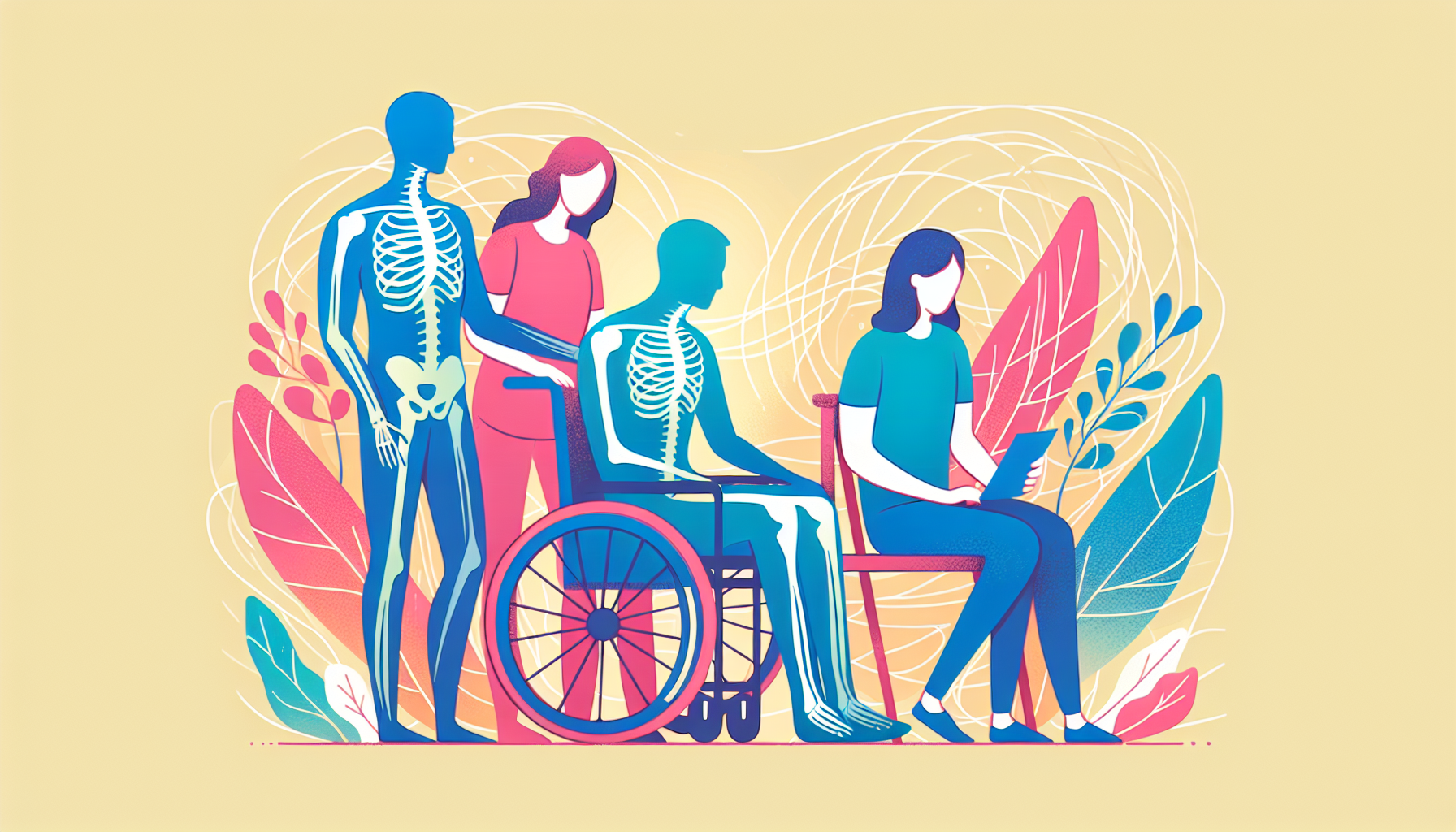Tirzepatide for Sleep Apnea - Can It Help?
Understanding Sleep Apnea and Its ChallengesSleep apnea is a common yet serious sleep disorder characterized by repeated interruptions in breathing during sleep. These pauses [...]
Read More
Medically reviewed by Abhijit Bhattacharyya | MD, PhD, MBA, Tufts University School of Medicine - Miami, Florida on April 5th, 2024.
Spinal muscular atrophy (SMA) is a genetic disorder that primarily affects babies and children, but can also develop in adults later in life, causing muscle weakness and difficulty with movement. When a person has SMA, there is a breakdown of nerve cells in the brain and spinal cord, leading to a lack of communication between the brain and muscles. As a result, the muscles become weak and shrink, causing various challenges in movement and, in severe cases, breathing and swallowing.
There are several types of SMA, each with varying levels of severity:
Type 0: The rarest and most severe form, developing during pregnancy. Babies with Type 0 SMA have weak muscle tone and breathing difficulties, often not surviving due to respiratory problems.
Type 1: A severe type of SMA, affecting infants. Children may have difficulty supporting their head, sitting without assistance, and have weak arm and leg muscles. Breathing problems are the primary concern, with most children not living past the age of 2.
Type 2: Affecting children between 6-18 months old, with symptoms ranging from moderate to severe. Children may be able to sit and stand with support but have more weakness in their legs than arms.
Type 3: The mildest form of SMA, with symptoms starting between 2-17 years old. Children can usually stand or walk independently but may struggle with running, climbing stairs, or rising from a seated position. Later in life, they may require a wheelchair for mobility.
Type 4: This form of SMA begins in adulthood, causing muscle weakness, twitching, or breathing problems, primarily affecting the upper arms and legs. Symptoms persist throughout life, but individuals can maintain mobility and even improve with the help of physical therapy exercises.
SMA is an inherited disorder passed down through families. A child with SMA has two copies of a broken gene, one from each parent. This faulty gene prevents the body from producing a specific protein essential for the survival of motor neurons, leading to the death of cells that control muscles. If a child inherits only one faulty gene, they become a carrier of the disease but do not develop SMA themselves.

Newborn Screening: SMA testing is now part of routine newborn screening programs in most states, allowing for early detection and treatment before symptoms develop.
Diagnosing SMA can be challenging, as symptoms may resemble other conditions. Doctors may inquire about developmental milestones, difficulty sitting or standing independently, breathing problems, and family history of similar symptoms. Various tests can help confirm an SMA diagnosis:
Genetic testing: Blood samples are analyzed for missing or broken genes that cause SMA.
Creatine kinase (CK) blood test: High levels of the CK enzyme may indicate muscle damage.
Electromyogram (EMG): Electrical impulses are sent through nerves to assess their ability to communicate with muscles.
CT and MRI scans: Detailed images of the body's internal structures can help rule out other conditions.
Muscle tissue biopsy: A small sample of muscle cells is removed for analysis.
While there is no cure for SMA, several FDA-approved medications and therapies can help manage symptoms and improve quality of life:
Nusinersen (Spinraza): This gene therapy adjusts the SMN2 gene, allowing it to produce more essential protein. It is administered through injections into the spinal fluid and is suitable for both children and adults with SMA.
Onasemnogene abeparvovec-xioi (Zolgensma): Used for children under 2 years old, this gene therapy replaces the faulty SMN1 gene. It is administered through an IV infusion and requires only one treatment.
Risdiplam (Evrysdi): An oral medication taken daily, risdiplam works to improve protein production by preventing disruption from the SMN2 gene.
In addition to gene therapies, doctors may recommend:
Breathing support: Special masks, mouthpieces, or ventilators can assist with breathing difficulties.
Nutritional support: Feeding tubes or working with a nutritionist can help ensure proper nutrition when swallowing is challenging.
Physical and occupational therapy: Exercises and daily activities can help maintain joint flexibility and muscle strength. Assistive devices such as leg braces, walkers, or electric wheelchairs may be necessary.
Spinal support: Back braces or surgery may be recommended to address spinal curvature issues.
Caring for a person with SMA often requires a multidisciplinary team of healthcare professionals, including pulmonologists, neurologists, orthopedists, gastroenterologists, nutritionists, and physical therapists. Family support and involvement in daily care are crucial, as well as seeking out support groups to connect with others in similar situations.
The outlook for individuals with SMA varies depending on the type and severity of the condition. While children with Type 1 SMA may have a shorter life expectancy, those with other types can live long lives with proper care and management of symptoms. Regardless of the challenges faced, every person with SMA will have a unique experience, and a personalized treatment plan can help improve their quality of life.
Understanding Sleep Apnea and Its ChallengesSleep apnea is a common yet serious sleep disorder characterized by repeated interruptions in breathing during sleep. These pauses [...]
Read MoreHeart attacks are often perceived as a predominantly male health issue, but the reality is that heart disease is the leading cause of death for women worldwide. Recognizing [...]
Read MoreTelehealth has transformed the way patients access healthcare, offering convenience, speed, and accessibility that traditional in-person visits often cannot match. With the [...]
Read More